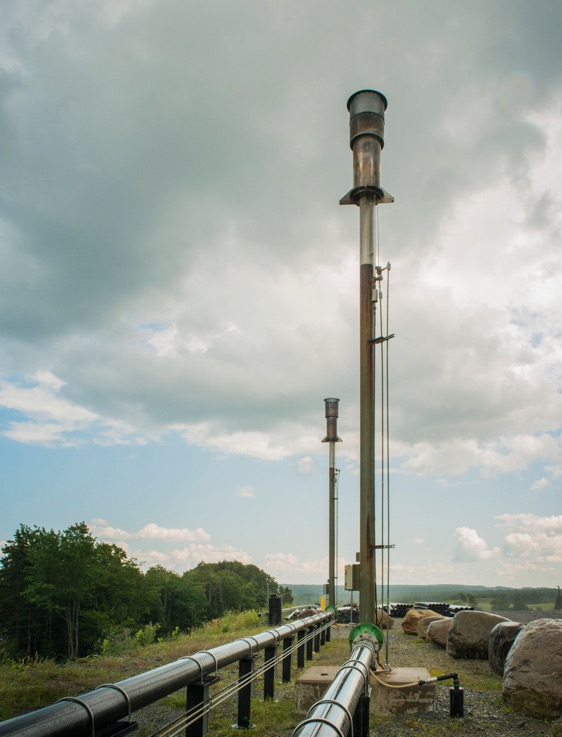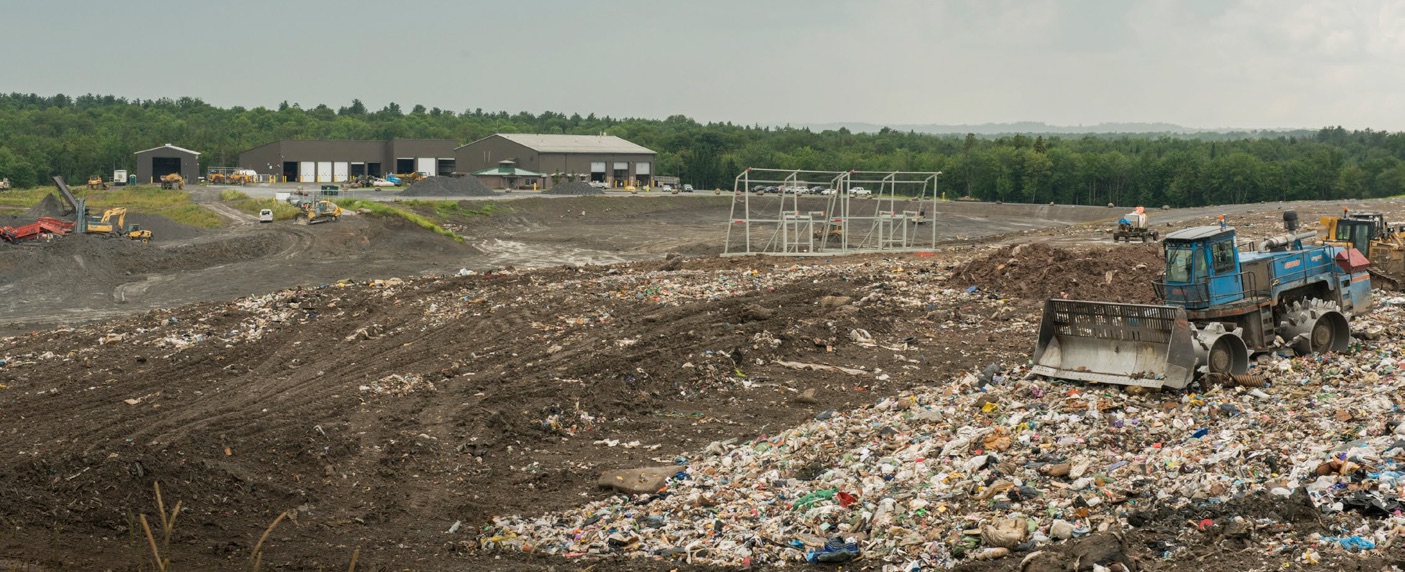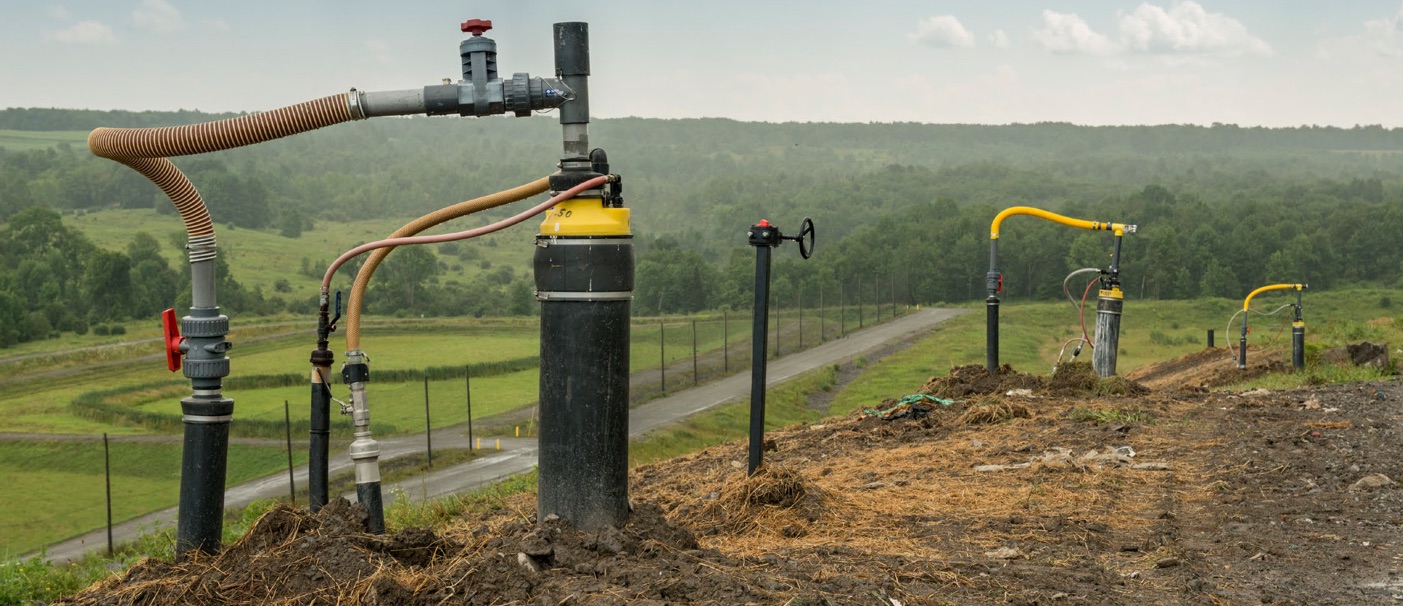Capturing value from waste in Upstate New York
One of Google’s long-standing carbon offset project partners is Oneida-Herkimer Solid Waste Management Authority. This Authority operates the newest land ll in upstate New York, the Oneida-Herkimer Regional Land ll, which serves rural communities with a combined population of 300,000.
Our partnership goes back to 2010, when we decided to invest in the Authority’s landfill gas project in its early stages. As organic waste decomposes inside a land ll, it creates methane gas, which is a significant contributor to climate change: methane is 28 times more potent than carbon dioxide and accounts for 16% of global GHG emissions.9 Land lls in many U.S. states aren’t required to capture or process methane if they don’t reach a certain threshold of emissions, so by voluntarily collecting and destroying it, they can generate carbon offsets.
The Authority wanted to install a network of wells, pipes, and flares to capture and destroy the site’s methane gas. Developing a carbon offset project provided the financial incentive for the initial investment. After vetting the project, Google committed to purchasing all the carbon offsets it would generate. This long-term investment provided the financial certainty the Authority needed to build and begin operating the gas-collection system three years earlier than planned. Since then, the project has eliminated half a million metric tons of carbon dioxide equivalent, generating more than half a million carbon offsets while ensuring the gas is properly handled.


